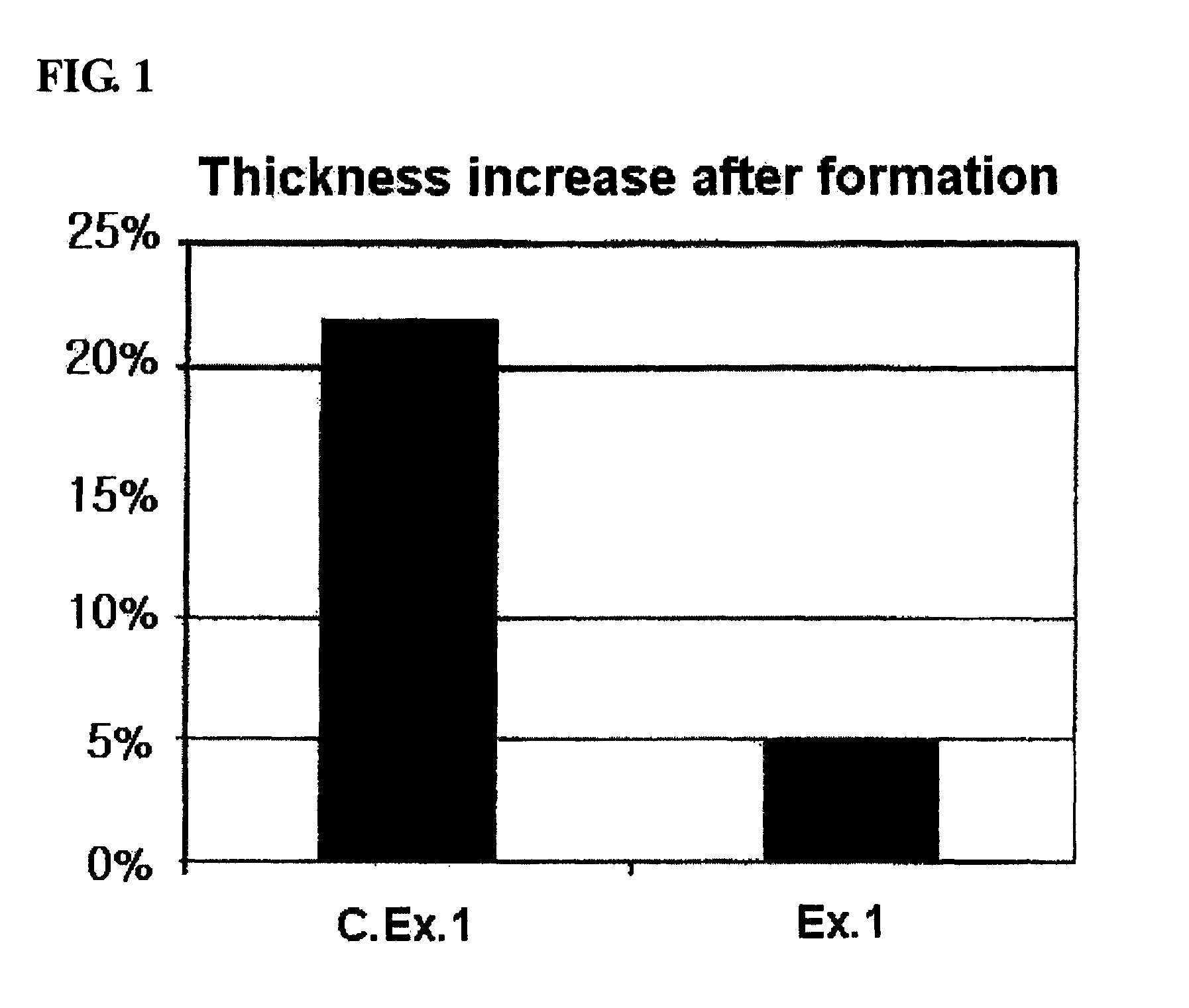Fabrication of lithium secondary battery
a secondary battery and lithium-ion battery technology, applied in secondary cell servicing/maintenance, cell components, sustainable manufacturing/processing, etc., can solve the problems of battery swelling due to gassing, and may be reduced, so as to increase the high-temperature lifespan of the battery
- Summary
- Abstract
- Description
- Claims
- Application Information
AI Technical Summary
Benefits of technology
Problems solved by technology
Method used
Image
Examples
example 1
[0033]As a positive electrode active material and a positive electrode conductive material, spinel type LiMn2O4 and acetylene black were used, respectively, and graphite was used as a negative electrode active material. An electrolytic solution, obtained by dissolving 1M LiPF6 salt in an organic solvent mixture of EC:EMC at 3:7, was used. As a positive electrode binder, PVDF (polyvinylidene fluoride) was used, and as a negative electrode binder, an SBR / CMC (styrene butadiene rubber / carboxyl methyl cellulose) system was used. A pouch was formed of aluminum, and had a thickness of 120 μm. A separator was a polyethylene separator.
[0034]In order to manufacture a positive electrode plate, the positive electrode active material, the conductive material, and the binder were added at a weight ratio of 94:3:3 to a binder solution (an NMP (N-methyl pyrrolidone) solvent containing 10 wt % binder), and were then mixed together, thus manufacturing the electrode plate having a loading level of 23...
PUM
| Property | Measurement | Unit |
|---|---|---|
| atmospheric pressure | aaaaa | aaaaa |
| thickness | aaaaa | aaaaa |
| temperature | aaaaa | aaaaa |
Abstract
Description
Claims
Application Information
 Login to View More
Login to View More - R&D
- Intellectual Property
- Life Sciences
- Materials
- Tech Scout
- Unparalleled Data Quality
- Higher Quality Content
- 60% Fewer Hallucinations
Browse by: Latest US Patents, China's latest patents, Technical Efficacy Thesaurus, Application Domain, Technology Topic, Popular Technical Reports.
© 2025 PatSnap. All rights reserved.Legal|Privacy policy|Modern Slavery Act Transparency Statement|Sitemap|About US| Contact US: help@patsnap.com



